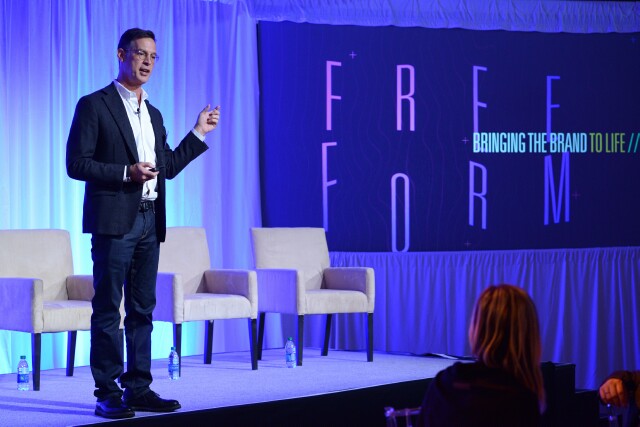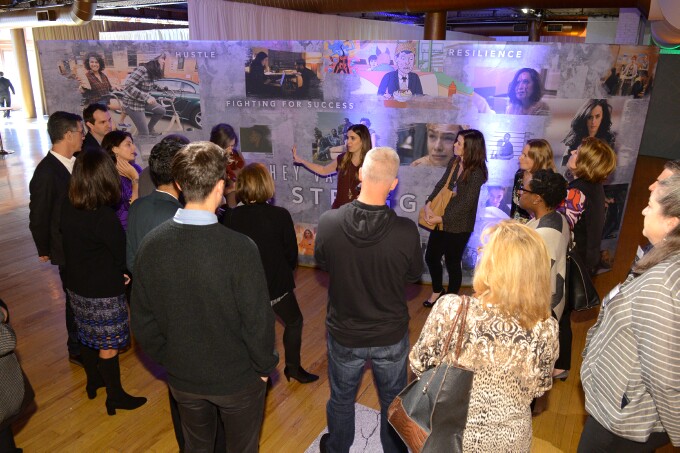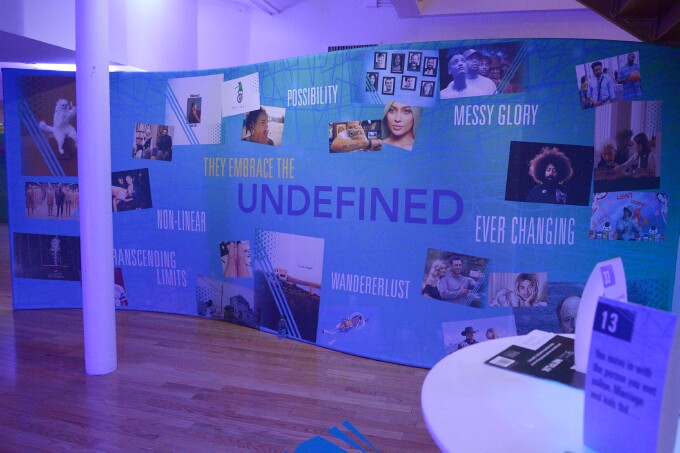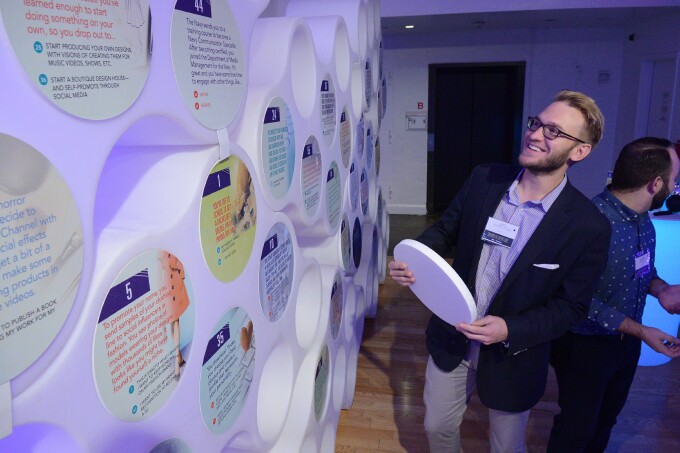Freeform's Becomers Have Mindsets of Their Own

At an industry showcase last Wednesday for ad sales clients, Freeform announced the results of a special research study (exclusively reported last week by Stuart Elliott here at MediaVillage) that defined their core teenage and young adult target consumers, which they call Becomers.Tom Ascheim, President, Freeform, explained that a Becomer is “shorthand for a life stage -- who am I and who am I evolving into.” (Ascheim is pictured above.)
In an inventive departure from the usual ad sales events, Freeform representatives escorted clients through four separate rooms, each filled with informative and interactive displays highlighting one of the network’s recently identified audience mindsets (more on those mindsets below). In addition to an overview of each mindset, attendees were asked to perform a task that helped explain how the mindset worked. One task involved going through a series of psychological questions that led to the determination of one’s ultimate profession. Another had participants describe celebrities in one word and hang their photo on a tree. After the tour, attendees enjoyed a luncheon panel of agency thought leaders who gave their perspectives on each mindset and its implications for advertisers.
Research to Discover Mindsets
A two-year research exploratory effort resulted in the identification of nine relevant themes, all of which spoke directly to Becomers. (At the event, Freeform chose to focus on the four that the network thought best captured the most compelling aspects of the Becomers' overall mindset.) The study reached out to 10,000 respondents, according to Jane Gould, Senior Vice President of Consumer Insights, Freeform, who noted, “We wanted to listen and be a part of the youth culture and see the world through their eyes, We wanted to bring to life the visual culture of the demographic, not by asking how they feel but by studying images and signs that decode the visual culture.”
Gould stressed that this research study did not ask respondents direct questions (which is unlike most research studies). “We had them focus on an image,” she explained. “Respondents gave us a dream that represented them. Then, using images pushed through semiotic analysis that uses both anthropology and linguistics, we brought the mindsets to life.”
The Mindsets
Thes mindsets Freeform chose to highlight at the event -- They Value the Struggle, Embracing the Undefined, Being Intersectional and Standing Together -- are each in their own unique way focused on a cultural and/or behavioral touchpoint of this generation. When these sensibilities are evident in content, branding and messaging, a deeper understanding and connection are formed.

They Value the Struggle encourages fighting for success. (The Struggle Wall is pictured above.) It embodies resilience, the journey of working hard for achievement, hustling. The 14-34s don’t want to see people who were given everything without working. They believe that people have to work hard for what they get. But engaging in the struggle can make them anxious. An example of a celebrity who embodies The Struggle is Beyonce who, after achieving great success through her own hard efforts, reveals her authenticity in sharing her real life hardships. This helps her to stay relevant with this audience.

Embracing the Undefined shows the non-linear possibilities that transcend limits, encourage wanderlust and create what Freeform calls a messy glory (see photo above). When everything is crumbling, seize the opportunity and pivot to positivism. Memes like the Crying Michael Jordan and programming like FX’s Louie and Netflix’s Unbreakable Kimmy Schmidt are examples of Embracing the Undefined. If life gives you lemons, you don’t necessarily need to make lemonade. You can also make lemon cake. You have many options.

Being Intersectional means being interchangeable, embracing and combining complexity and offering many versions of oneself. The rally cry is Don’t Box Me In where we are able to learn many different (and sometimes conflicting) things about a single person. An example of a program that personifies Intersectionality is NBC’s This Is Us in which the viewer discovers new things about each character that might surprise or confound.
Standing Together is a value concept that differs from past generations. With the proliferation of social media and the immediate connection, there is greater awareness of life’s disparities -- the haves and have nots -- resulting in a collective mentality and shared experience of adversity. This generation is using their power, rising up and offering real possibility for good. Keywords to connect to this mindset include “punch up/not down,” “the glass is half full,” “support underdogs,” “power to drive change” and “optimism.” An example of how advertisers use this concept is the Nike campaign Find Your Greatness which highlights the efforts of regular folks rather than elite athletes.
Mindsets in Use
So how does the use of mindsets help advertisers and the network? For many of them, what resonated was “how heroes for Millennials differ from those for Gen X,” said Scott Hess, Executive Vice President, Corporate Marketing and Millennials for MediaVest/Spark. “Bling is out. Earned bling is nobler.”
Thomas McGinley, Project Director, Flamingo Group, noted that, “communities can live longer through streaming.”
The secret, according to Jonah Disend, Founder and CEO, Redscout, “is to focus on experiences and loyalty showing that you care about the consumer. Cultivate the tribe, listen carefully and see where the genius can be found.”
For the network, these audience filters “are used to power our business,” Ascheim said. “The insights we have gained inform our branding and programming.” The relaunch from ABC Family to Freeform has helped to shift attitudes resulting in an increase in brand affinity and loyalty. “This life-stage can be a scary time; there is ambiguity but also positivity,” he continued. “The potential energy is loud, huge and exciting. So we are being fluid and ever-changing, embracing the idea of an un-tagline. We are now moving quickly because the audience moves quickly.”
Click the social buttons above or below to share this content with your friends and colleagues.
Photos courtesy of Freeform. The opinions and points of view expressed in this article are exclusively the views of the author and/or subject(s) and do not necessarily represent the views of MediaVillage.com/MyersBizNet, Inc. management or associated bloggers.


